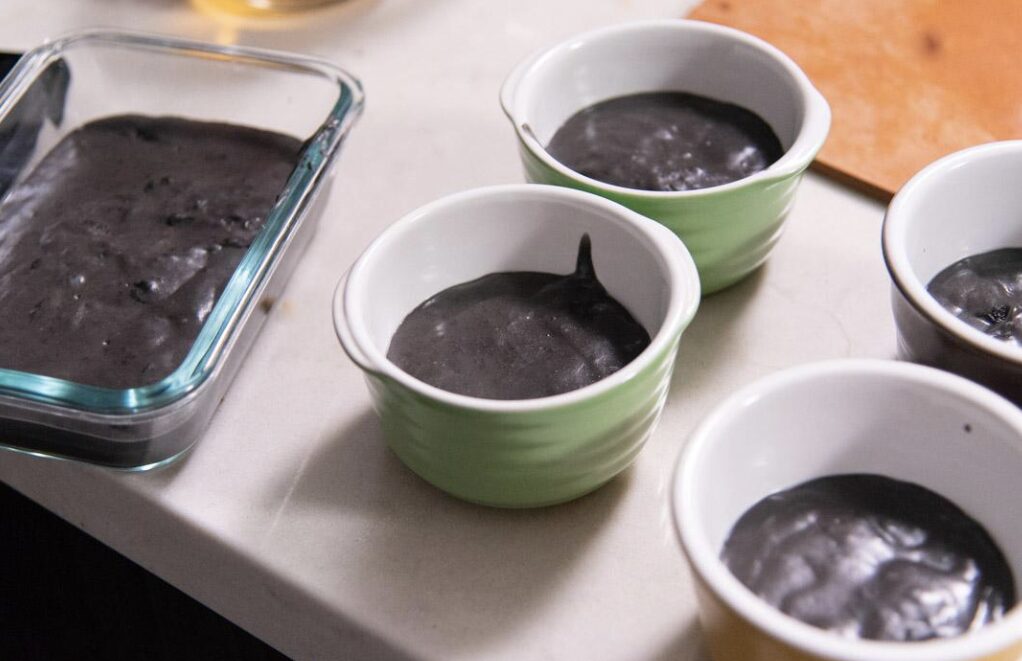Are you tired of the same old cup of
Then it’s time to change things up with a cup of Matcha Milk
This powerhouse drink packs a delicious punch with its combination of earthy matcha and creamy milk.
Say goodbye to boring
Trust me, one sip of Matcha Milk

What is Matcha?
Matcha is a type of green
The
Even better?
The resulting powder has a smooth, umami flavor and is often used in traditional Japanese
Matcha powder is known for being high in antioxidants and is believed to have numerous health benefits, including boosting energy and metabolism, improving mental clarity and concentration, and reducing stress levels.
Want to experience them?
What does Matcha Actually Taste Like?
Matcha has a unique taste that is often described as vegetal, grassy, and slightly sweet. The flavor can vary depending on the quality and grade of the
The aftertaste can vary widely, depending on the blend and preparation of the
It’s this complex and lingering aftertaste that makes a cup of matcha green
Or no time at all!
Which Matcha Grade should you use?
1. Ceremonial Grade Matcha
Matcha is the highest quality of Matcha green
2. Culinary Grade Matcha
Matcha is a type of green tea that is specifically meant to be used for baking and cooking, but it’s not necessarily of lower quality. Instead, it has a different flavor profile and is best used in recipes rather than for drinking on its own.
It pairs well with other ingredients in smoothies and milk-based drinks. It also has a bright green color, although not as vibrant as a ceremonial grade, and it actually contains higher antioxidants.
Now that you’ve learned all about the 2 types of Matcha green tea, there’s no stopping you from getting your hands on the perfect powder for your needs!
The only thing left is to actually buy it, but hey, that’s the easy part, at least I tried to make it easy for you.
Here’s a link to what matcha green

Best Milk for your Matcha Milk Tea
The best milk to use in Matcha Milk
Cow’s milk is the most common option and provides a creamy and rich taste to the drink.
However, if you’re looking for a non-dairy option, almond or soy milk are good choices as they have a neutral flavor and can be easily substituted and create a similar creamy texture.
Oat milk is also a popular alternative that provides a nutty and slightly sweet flavor.
Almond milk is my favorite, thanks to being lactose intolerant. The best milk to use in Matcha Milk
You can experiment with different types of milk to find the one that you like best and that suits your tastes.
Frequently Asked Questions about Matcha Tea
History and Origin of Matcha
Matcha
Over time, the Japanese developed their own unique techniques for growing, harvesting, and processing
In the late 12th century, the Japanese
The tradition of matcha
Today, matcha continues to be an important part of Japanese culture and is enjoyed around the world as a popular drink and ingredient in cooking and baking. The popularity of matcha has exploded in recent years, with people seeking out its unique flavor and health benefits, making matcha a staple in cafes,
How Matcha Powder is Made?
Matcha powder is made by a specific process that involves growing, harvesting, and processing the
- The
tea plants are grown in the shade for 20 days before harvest, which increases their chlorophyll content and gives them a unique, vibrant green color. This also produces a sweeter and milder flavor profile compared to regular greentea .
- The
tea leaves are carefully harvested and selected for their quality and flavor. Only the smallest and youngest parts of the plant are picked, and the young leaves harvested on that day are usually known as the absolute finest in quality and flavor. The leaves are then sorted and processed.
- The harvested leaves are quickly steamed to stop the oxidation process and maintain their bright green color. They are then dried to remove any moisture.
- After steaming, the
tea leaves go through a multi-chambered air machine for cooling and are then moved to large cages equipped with heated blowers. This process transforms the leaves into aracha (荒茶), or CrudeTea .
- Once dry, the leaves are sorted for the grade. This is followed by the task of removing the stems and veins from the aracha, something that is usually done in a special drum-like machine. The part that remains is called tencha (碾茶), the raw material for matcha powder, and has usually a dark green color.
- The final step in the process is to grind the tencha leaves into a fine powder. Traditionally, this was done using manual stone mills, but now large, slow-turning granite wheels are used. The resulting powder particles are very small, typically around 4 microns in size. This grinding process is time-consuming and typically takes one hour to produce between 30 to 70 grams of matcha.

Matcha vs. Green Tea
Matcha and green tea come from the same Camellia sinensis plant, but the difference lies in their production and preparation methods. Matcha undergoes a more controlled and meticulous process, starting with growing the
On the other hand, green
Matcha vs. Hojicha
Hojicha and matcha are both forms of green tea powder, but they have different origins and flavor profiles. Unlike matcha, which is made from young
This roasting process gives hojicha its unique reddish-brown color and reduces its caffeine content, which is significantly lower than matcha’s. Hojicha has a smooth and full-bodied flavor that is smoky, earthy, slightly sweet, and savory, whereas matcha has a bright, grassy, and vegetal taste.
Does Matcha contain Caffeine?

Yes, matcha does contain caffeine. Since it’s made from shade-grown
The exact amount of caffeine in matcha can vary depending on the quality and type of the
Conclusion
Well, there you have it!
Matcha Milk
Whether you prefer your
So why not try this recipe and take a sip on the wild side and give this ancient drink a try today?
Just be careful, because one sip of this delicious
Master (Your) MATCHA MILK TEA RECIPE in 5 Minutes A Day
- Prep Time: 5
- Cook Time: 3
- Total Time: 8 minutes
- Yield: 1 cup 1x
- Category: drink
- Cuisine: japanese
Ingredients
- 1 cup milk
- 1 1/2 tsps matcha
- 2–4 tsps sugar
Instructions
- Using a small fine mesh strainer, add matcha while sifting over a large mug or small bowl.
- Add sugar and use a whisk to mix the sugar and matcha together. (the sugar granules help to minimize clumps if you skipped the strainer above)
- Using a small saucepan, with medium heat, bring the milk to just before a boil.
- Remove from heat and immediately combine with the matcha and sugar.
- Stir to dissolve the sugar and enjoy!
Notes
For cold milk tea, allow to cool. Personally, i prefer the taste of a cooked milk tea as compared to an uncooked milk tea. Try both ways and see if you prefer one vs the other!
let me know in the comments
Type the milk you’d use for this recipe!
“cow” vs “plant”










Looks so delicious!
Looking forward to giving it a try.
Thanks!
thank you Carlyn, let us know how it turns out !
My first drink every morning x 2 weeks now. delicious with almond milk.